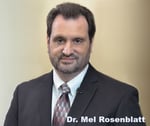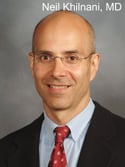Submitted to VEIN Magazine by American College of Phlebology
Two years ago, The American College of Phlebology (ACP) initiated an effort to formally unify with the American Venous Forum--a concept that has been the subject of much debate. Here, the ACP's leadership discusses the result of that initiative from their perspective and where the organization sees its collaborative efforts headed from here.
The American College of Phlebology (ACP) prides itself on having made collaboration between like-minded professionals a top priority; collaboration was the impetus for the organization right from the start. Dr. Anton Butie founded the ACP (then the North American College of Phlebology) in 1985 with the express purpose of bringing together practitioners from a wide range of specialties who all shared a common goal: the treatment and understanding of venous disease.
A little-known and poorly understood specialty at that time, vein treatment often equated to largely ineffective procedures that were inconvenient and painful for patients. Members of the ACP would share a commitment to increasing awareness of venous disease, advancing treatments, and improving outcomes for patients, regardless of their specialties.
Throughout the course of the ACP’s 31-year history, the organization has been inclusive, inviting members with a diverse array of perspectives on venous disease treatment to share what they know and provide educational opportunities for those interested in enhancing their treatment offerings.
Today, the ACP remains a leader in encouraging collaborations among practitioners, building coalitions, and strengthening communications across the specialty.
While the largest, the ACP is only one of several societies in the arena of venous and lymphatic disease. Among these is the American Venous Forum (AVF), an organization whose activities have increasingly paralleled those of the ACP.
The ACP’s leadership notes, as treatments of venous disease have advanced in recent years, becoming less invasive, more cost-effective and, most importantly, resulting in improved patient quality of life, the ACP’s focus on professional development and cooperation for supporting patient safety and advocacy has never been more important. For this reason, nearly two years ago, the ACP initiated an effort to formally unify with the AVF. Since then, merger conversations have been put on hold in favor of improved collaborations between the two organizations.
So what does this renewed collaboration look like for the ACP? How, in a specialty that is rapidly drawing large numbers of practitioners and increased scrutiny, can the ACP strengthen its strategic partnerships with industry leaders, government entities, and other professional societies, including the AVF, for the betterment of the specialty?
 Historical Cultural Differences
Historical Cultural Differences
Whereas the ACP sprung from the desire of physicians from a multitude of specialties involved in vein care to enhance educational opportunities, the AVF’s original membership was composed of academic vascular surgeons. “The original difference between the two was in approach,” explains Melvin Rosenblatt, MD, FACPh, interventional radiologist with Connecticut Image Guided Surgery, former president of the ACP and chair of the ACP Foundation.
“The ACP said, ‘We want physicians who will treat patients, and we’re blind to their specialties, just do a good job.’ The AVF was a forum for vascular surgeons to discuss their ideas and improve their practices, but it was very focused on that specialty.”
Though the two organizations were created for different reasons, they have worked separately toward many of the same goals. Both societies have spent money for similar initiatives and raised funds from the same donor base. Though it had been suggested numerous times by donors, members, and even leaders of both organizations that the two would be more powerful and effective as one, it was Dr. Rosenblatt who took steps to formally initiate a merger process in 2015, during his ACP presidency.
“We had begun to compete, which engenders animosity,” Rosenblatt says. “But at the end of the day, we shared the same mission, and it was the right thing to do.”
Rosenblatt approached the AVF about unifying, suggesting that the parties perform due diligence to fully explore the possibility. The AVF agreed to explore the idea in earnest, and the organizations equally shared the cost of hiring a third-party merger consultant to step them through the process in a manner that was effective and fair for all concerned.
 “There are a lot of reasons we’d want to merge,” says Neil Khilnani, MD, FACPh, incoming president of ACP. Khilnani, an interventional radiologist and associate professor at Weill Cornell Medical College of Cornell University, says that merging the two organizations into a single, more powerful voice would gain greater recognition for the specialty. Khilnani says that up to this point, the two organizations have worked in silos.
“There are a lot of reasons we’d want to merge,” says Neil Khilnani, MD, FACPh, incoming president of ACP. Khilnani, an interventional radiologist and associate professor at Weill Cornell Medical College of Cornell University, says that merging the two organizations into a single, more powerful voice would gain greater recognition for the specialty. Khilnani says that up to this point, the two organizations have worked in silos.
“We both advocate for patients, for the application of best practices, and for the accessibility of care. But a lot is duplicated,” Khilnani says. “If we worked together, we could do it more efficiently, and it would open up time for addressing other important issues such as interaction with governmental and commercial payers, harnessing the power of clinical registries, guideline development, research, and patient awareness and education. Together we could accomplish more.”
Although Rosenblatt, Khilnani, and other ACP members who had been hopeful about the unification were disappointed by the outcome, they were happy to have tried. “I still think it was the right call; it’s unfortunate that it didn’t happen, but it’s okay. We’ll make every effort to identify potential areas for collaboration. The ACP has a long history of collaboration with others,” says Rosenblatt.
The Past Defines the Future
While the ACP has worked with a number of organizations and commercial interests over the years, the outcome of the merger talks highlights the need to define what this collaboration will look like in the future.
A look back at the ACP’s more recent involvements with other organizations may point the way. Khilnani refers specifically to the recent Medicare Evidence Development and Coverage Advisory Committee (MEDCAC) coalition as a perfect example of this.
“As chair of the ACP Foundation, Dr. Rosenblatt also suggests that fundraising at cross-purposes would be detrimental for the industry. As such, teaming up with various organizations must be a cornerstone of ACP’s strategy.”
The coalition, comprised of 10 organizations in the field of venous disease, including and led by the ACP, was formed to provide evidence-based insights to the CMS regarding the recent surge in vein treatment procedures, to identify gaps in treatment and to offer guidance in the formation of policy and coverage decisions.
Outgoing president Mark D. Forrestal, MD, FACP and physician/ owner at NCH Vein Care in Arlington Heights, IL, points to the ACP-developed fellowship program, a year-long program established by the ACP, administered by the American Board of Venous & Lymphatic Medicine (ABVLM) and currently under the instruction of two AVF members, as a significant collaborative effort.
The program, which saw its first fellow enrolled in 2009, was the first step toward developing a true Phlebology Fellowship Training Program, with a comprehensive educational curriculum and formalized assessment methods—a move that benefits all in the profession.
Forrestal also cites the Intersocietal Accreditation Commission (IAC) as an example of ACP’s meaningful collaborations.
 “Physicians from the ACP, AVF, and other societies wanted to create an outpatient program that would lead to recognition for specific vein centers,” Forrestal says. “Prior to that, any physician could just treat veins, so this would be a higher level of oversight and initial training in order to qualify for designation.
“Physicians from the ACP, AVF, and other societies wanted to create an outpatient program that would lead to recognition for specific vein centers,” Forrestal says. “Prior to that, any physician could just treat veins, so this would be a higher level of oversight and initial training in order to qualify for designation.
The IAC would designate vein centers through an accreditation process, and that’s in the works now. The board of directors is currently comprised of members from several organizations. And I believe this is the future of how vein treatments are going to qualify for insurance, so this is an important source of collaboration.”
Not all alliances have the formality of committees. Forrestal, Rosenblatt, and Khilnani all point to numerous small and large occasions in which the ACP’s members have worked in concert with other societies for the betterment of the specialty.
These have included attending one another’s meetings, reciprocal agreements for presenting research at each other’s annual conferences, teaming up to prepare white papers or other literature regarding vein disease and treatments, co-authoring studies, and even drafting letters to insurers or governmental entities.
As chair of the ACP Foundation, Dr. Rosenblatt also suggests that fundraising at cross-purposes would be detrimental for the industry. As such, teaming up with various organizations must be a cornerstone of ACP’s strategy. An example of this is the Foundation Executive Leadership Summit.
At this event, which took place in 2012 and 2015, physicians, donors, and other members of the industry (such as representatives from device manufacturers, drug companies, etc.) were invited to share their ideas on their vision for the future of the field and to identify opportunities for working together to strengthen it.
The Foundation works frequently with industry partners. For example, when approached by a device manufacturing company to draft a letter requesting a new billing code for a device therapy, Rosenblatt and the Foundation brought the issue to the ACP for action.
“That’s one of the ways we’ve helped industry partners,” Rosenblatt says. “It’s not just to serve one company’s unique need. We won’t show a preference to one company over another, for instance, but if it supports our members as well when our principles are aligned, we’ll support that to improve the specialty as a whole.”
A Vision for a Shared Future
Khilnani, Rosenblatt, and others say that the ACP will seek more opportunities to partner—with the AVF and others — in ways that further the specialty and address its most pressing needs, rather than duplicating efforts in silos.
Khilnani says the MEDCAC coalition nicely exemplifies the efforts that the ACP will participate in going forward.
“It became clear that the CMS responded very well to a coalition of physician organizations getting together to assess the literature regarding their specific questions about venous disease,” says Khilnani, who headed up the MEDCAC effort.
“The people who put the CMS panel together said they thought it was a compelling way to present information to the panel and that, as a result of the multidisciplinary approach, they felt much more comfortable with the information.”
“The MEDCAC coalition is a perfect example of how collaboration springs forth from need,” Rosenblatt says. Khilnani says that the MEDCAC coalition, ironically, speaks to the power that an ACP/AVF merger might have. At the very least, he adds, it should informthe way in which the two organizations work together going forward, and how the ACP will work with other professional associations as well, with industry needs driving efforts to use one unified voice effectively.
“It’s a mission of mine over the next two years as president to find more opportunities to work together with the AVF. I believe doing so will demonstrate that members in both organizations have similar core values and interest in doing the right things for patients.”
Another important asset is the ACP PRO Venous Registry, an important step toward collecting verifiable information in this rapidly growing field of medicine, as well as steering best practices and improving patient outcomes. This proprietary ACP database is headed up in part by Marlin Schul, MD, FACPh, a fellow of the AVF and current treasurer of the ACP.
This voluntary database collects information on roughly 600 data points culled from providers’ electronic medical records.

“The work the ACP does in sorting out the epidemiology for patients and sorting out comparative and cost effectiveness helps everyone,” says Schul. “The key now is that the ACP registry is the only one that follows every patient presenting to a given practice, while eliminating the pain of duplicate entry by EMR mining.
The competing registries are more procedural, and they don’t have the details and the quality-of-life measures we’ve been capturing, which are so critical in supporting the work we do. So in terms of collaboration, it’s in every society’s best interest to share data.”
At the time of this writing, the ACP PRO Venous Registry contains data on nearly 50,000 patient encounters from over 12,000 unique patients. The registry has 99 unique NPIs licensed for participation, and that number is growing rapidly as more vendors are easing the burden of participation.
These efforts support the ACP’s strategic plan for collaboration, says incoming president Khilnani. And though the ACP will continue ongoing efforts to team with any and all organizations involved in venous care, there will no doubt be a focus on increasing collaboration with the AVF in particular.
Khilnani says that informal polling during the unification process suggested that most of the members, particularly the younger members of both the ACP and AVF, favor an eventual merger between the two, and he hopes that increased collaborations will result in a growing appreciation of the talents, integrity, and enthusiasm of members from both organizations, moving them toward unification over the next few years.
“Even though unification discussions were not successful at this time, we have mapped out some steps we’d like to take that would allow both organizations to work together more,” Khilnani says. “I think the more we work together, the more we can begin to trust each other and respect our individual skill sets.”
Suggestions from board members have included semiannual joint board meetings for the two societies, shared issue-driven committees that would involve members of both organizations and shared contributions to the writing of clinical practice guidelines.
“It’s a mission of mine over the next two years as president to find more opportunities to work together with the AVF. I believe doing so will demonstrate that members in both organizations have similar core values and interest in doing the right things for patients. I expect these opportunities will demonstrate that members of both organizations have things they can bring to the collective community that ultimately benefit the care of patients. It is my belief that the cultural differences between the two organizations are increasingly becoming historical.
The cohorts of physicians who have completed their training in the last five to 10 years have a strong history and interest in working in multidisciplinary teams and appreciate the value of the skills of physicians in other specialties. Harnessing the energy and enthusiasm of these younger physicians in moving vein care forward will benefit everyone.”


